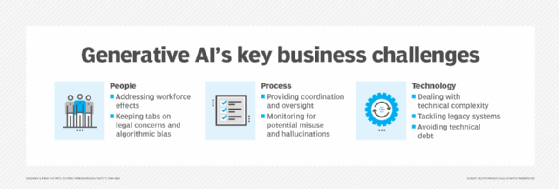All Categories
Featured
That's why a lot of are implementing vibrant and smart conversational AI versions that customers can engage with through message or speech. GenAI powers chatbots by comprehending and producing human-like text actions. In enhancement to customer care, AI chatbots can supplement advertising efforts and support inner interactions. They can likewise be incorporated right into sites, messaging apps, or voice assistants.
A lot of AI business that educate large models to create text, photos, video clip, and audio have not been transparent regarding the content of their training datasets. Different leaks and experiments have exposed that those datasets consist of copyrighted material such as publications, news article, and movies. A number of lawsuits are underway to figure out whether use copyrighted product for training AI systems makes up reasonable usage, or whether the AI business require to pay the copyright holders for use their material. And there are certainly lots of categories of poor things it might in theory be made use of for. Generative AI can be utilized for individualized scams and phishing assaults: As an example, using "voice cloning," scammers can replicate the voice of a specific individual and call the person's family members with a plea for aid (and cash).

(At The Same Time, as IEEE Spectrum reported this week, the united state Federal Communications Compensation has reacted by disallowing AI-generated robocalls.) Photo- and video-generating devices can be made use of to generate nonconsensual pornography, although the tools made by mainstream companies disallow such use. And chatbots can in theory walk a prospective terrorist through the actions of making a bomb, nerve gas, and a host of other scaries.
What's more, "uncensored" variations of open-source LLMs are available. Despite such prospective issues, lots of people think that generative AI can also make people more productive and can be used as a device to enable completely new kinds of imagination. We'll likely see both calamities and creative bloomings and plenty else that we do not expect.
Discover more regarding the math of diffusion versions in this blog post.: VAEs contain 2 semantic networks generally described as the encoder and decoder. When given an input, an encoder converts it into a smaller sized, more thick depiction of the information. This pressed representation preserves the information that's required for a decoder to rebuild the initial input information, while discarding any unimportant info.
How Is Ai Used In Marketing?
This allows the customer to quickly sample new latent representations that can be mapped through the decoder to produce novel data. While VAEs can generate outputs such as pictures much faster, the pictures created by them are not as detailed as those of diffusion models.: Found in 2014, GANs were thought about to be one of the most typically made use of approach of the three prior to the recent success of diffusion models.
The 2 versions are educated with each other and obtain smarter as the generator produces much better material and the discriminator improves at identifying the produced content. This treatment repeats, pushing both to continuously enhance after every iteration up until the created material is identical from the existing web content (How does AI create art?). While GANs can offer high-quality samples and generate results quickly, the example variety is weak, for that reason making GANs much better fit for domain-specific information generation
: Similar to persistent neural networks, transformers are developed to refine consecutive input data non-sequentially. Two mechanisms make transformers particularly proficient for text-based generative AI applications: self-attention and positional encodings.
Generative AI starts with a foundation modela deep discovering model that acts as the basis for several different kinds of generative AI applications - What are ethical concerns in AI?. The most common structure designs today are huge language versions (LLMs), produced for message generation applications, but there are also foundation versions for photo generation, video generation, and noise and music generationas well as multimodal structure models that can support numerous kinds material generation
How Does Ai Process Big Data?
Discover more regarding the history of generative AI in education and terms connected with AI. Find out more regarding just how generative AI features. Generative AI tools can: Reply to motivates and questions Produce images or video Sum up and synthesize info Change and edit material Create imaginative works like musical structures, stories, jokes, and rhymes Create and remedy code Control information Produce and play games Capabilities can vary considerably by tool, and paid versions of generative AI devices typically have specialized functions.

Generative AI tools are continuously finding out and progressing yet, since the date of this magazine, some constraints include: With some generative AI tools, constantly integrating actual study into message remains a weak capability. Some AI tools, for instance, can create text with a recommendation list or superscripts with links to resources, however the recommendations typically do not represent the text created or are fake citations constructed from a mix of actual publication info from numerous resources.
ChatGPT 3 - Autonomous vehicles.5 (the free variation of ChatGPT) is educated using data available up till January 2022. Generative AI can still compose potentially inaccurate, simplistic, unsophisticated, or biased actions to questions or prompts.
This listing is not comprehensive but includes some of the most extensively utilized generative AI devices. Devices with cost-free variations are suggested with asterisks. To ask for that we add a device to these listings, call us at . Elicit (sums up and synthesizes resources for literature evaluations) Review Genie (qualitative research study AI aide).
Latest Posts
How Does Ai Understand Language?
Future Of Ai
What Industries Benefit Most From Ai?